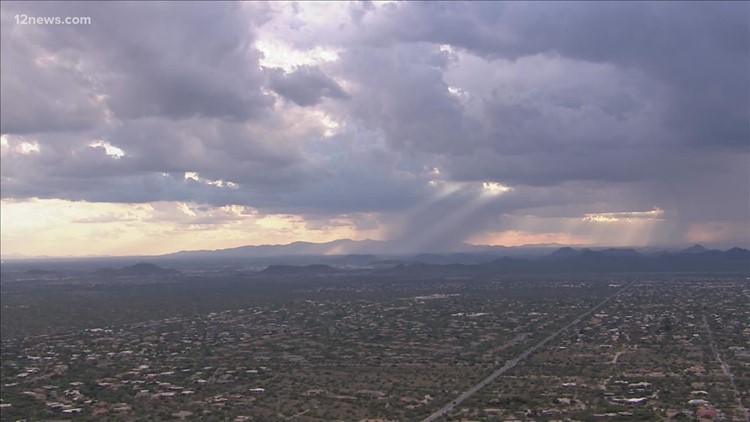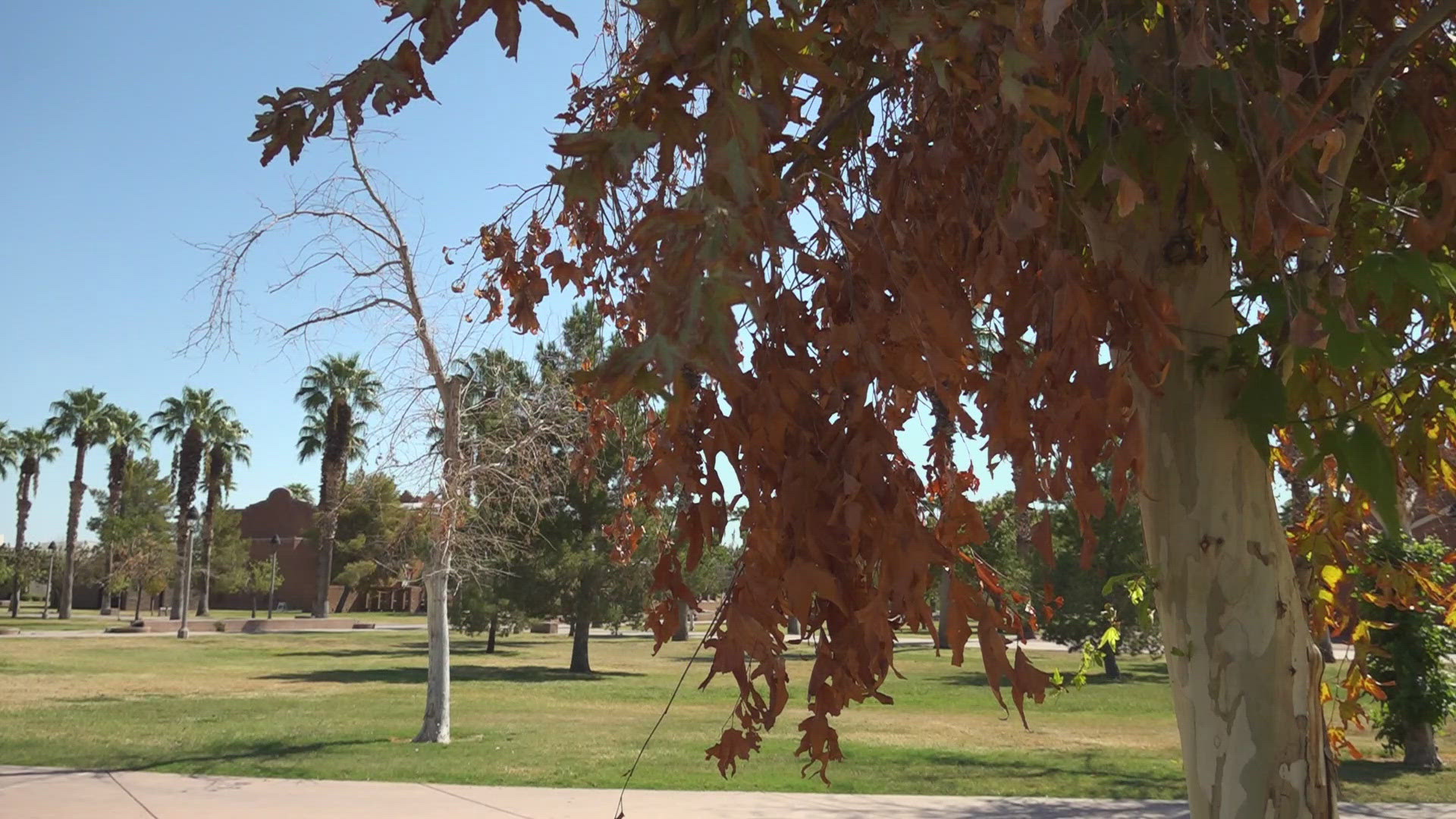PHOENIX —
After a dry 2019 and 2020 monsoon season, Monsoon 2021 experienced above-average rainfall. The rain was a welcomed change for some Arizonians, yet left others with their property in shambles.
Rainfall across Arizona
After two dry, hot years, Monsoon 2021 was the wettest monsoon season since 2014 in Phoenix according to the National Weather Services.
This year's rainfall in Phoenix measured almost 2 inches over the normal amount. July 2021 had over 17 times more rainfall than July 2020, according to NWS statistics.
The increase in rainfall meant a drop in temperatures for the Valley. July's temperature average was more than five degrees cooler than July 2020.
The Valley wasn't the only part of Arizona that saw an increase in rainfall.
Tucson saw its third wettest monsoon on record, measuring 7 inches over the average amount of rainfall. Flagstaff also saw a large increase with almost 9 inches more rainfall than 2020.
Monsoons are about a change in wind-flow patterns.
Changes in wind flow allow thunderstorms to move into the Valley, NWS Meteorologist Austin James said.
Monsoon season lasts from June 15 to Sept. 30, and during the season Phoenix sees 33% of its annual rainfall.
"This year stands out in stark contrast," James said while comparing Monsoon 2021 to the past two years.
Flood damage and loss
Although Monsoon 2021 decreased Valley temperatures and short-term drought levels, it brought damaging floods to many Arizona communities.
Flooding in Gila Bend destroyed homes and businesses and claimed the lives of two people. One victim, Jesus Perez, died trying to save a woman from her car during a flash flood.
In response to the extensive damage in Gila Bend, Arizona declared a State of Emergency and made over $200,000 available in recovery funds.
In Cottonwood, 16-year-old Faith Moore was swept away in a wash after her car got stranded. Faith called 911, but by the time authorities arrived the water levels were above eight feet.
Floods derived from burn scars left by the Telegraph Fires swept through the far East Valley, trapping families in their homes and annihilating property in their wake.
Dramatic flooding in Flagstaff also occurred after it experienced historic levels of rainfall on the burn scar from a wildfire two years ago.
The White House declared Apache, Coconino and Navajo counties as disaster areas after a series of severe storms between July 22 and July 24. The declaration made them eligible for federal dollars that they can use to rebuild and replace facilities that were damaged during the storms.
Arizona drought levels affected
In addition to bringing a cooler summer, Monsoon 2021 eliminated all areas of exceptional drought (D4) in the state according to The Arizona Department of Water Resources.
There are 5 drought severity classifications:
- D0- Abnormally Dry
- D1- Moderate Drought
- D2- Severe Drought
- D3- Extreme Drought
- D4- Exceptional Drought
The percentage of Arizona in extreme drought dropped from 83% at the beginning of August to 40% in mid-September, according to the United States Drought Monitor.
Right now, nearly 87% of Arizona is still in a moderate drought. However, following Monsoon 2021, numbers dropped from 99% to the current 87%, according to ADWR.
Although short-term drought conditions improved, the long-term drought in Arizona remains a pertinent threat.
Long-term drought involves reservoir levels and snowpack over years, which can take decades to fix.
"We're going to need quite a few years of above-average precipitation to recharge these systems," Doug Hendrix, with the US Bureau of Reclamation at Lake Mead said.
Arizona Weather
Arizona has seen its fair share of severe weather. Here is a compilation of videos from various storms across the Grand Canyon state.



